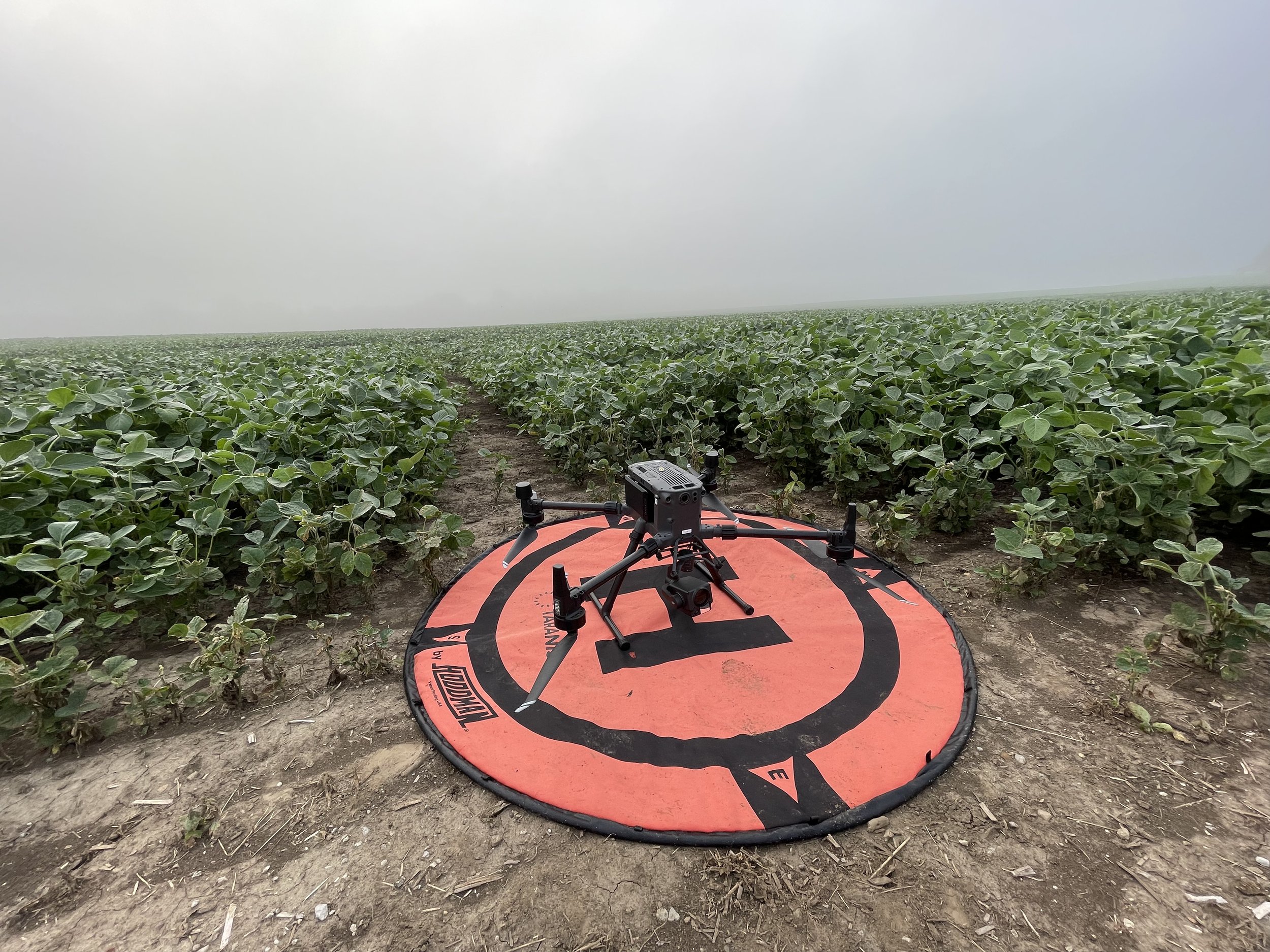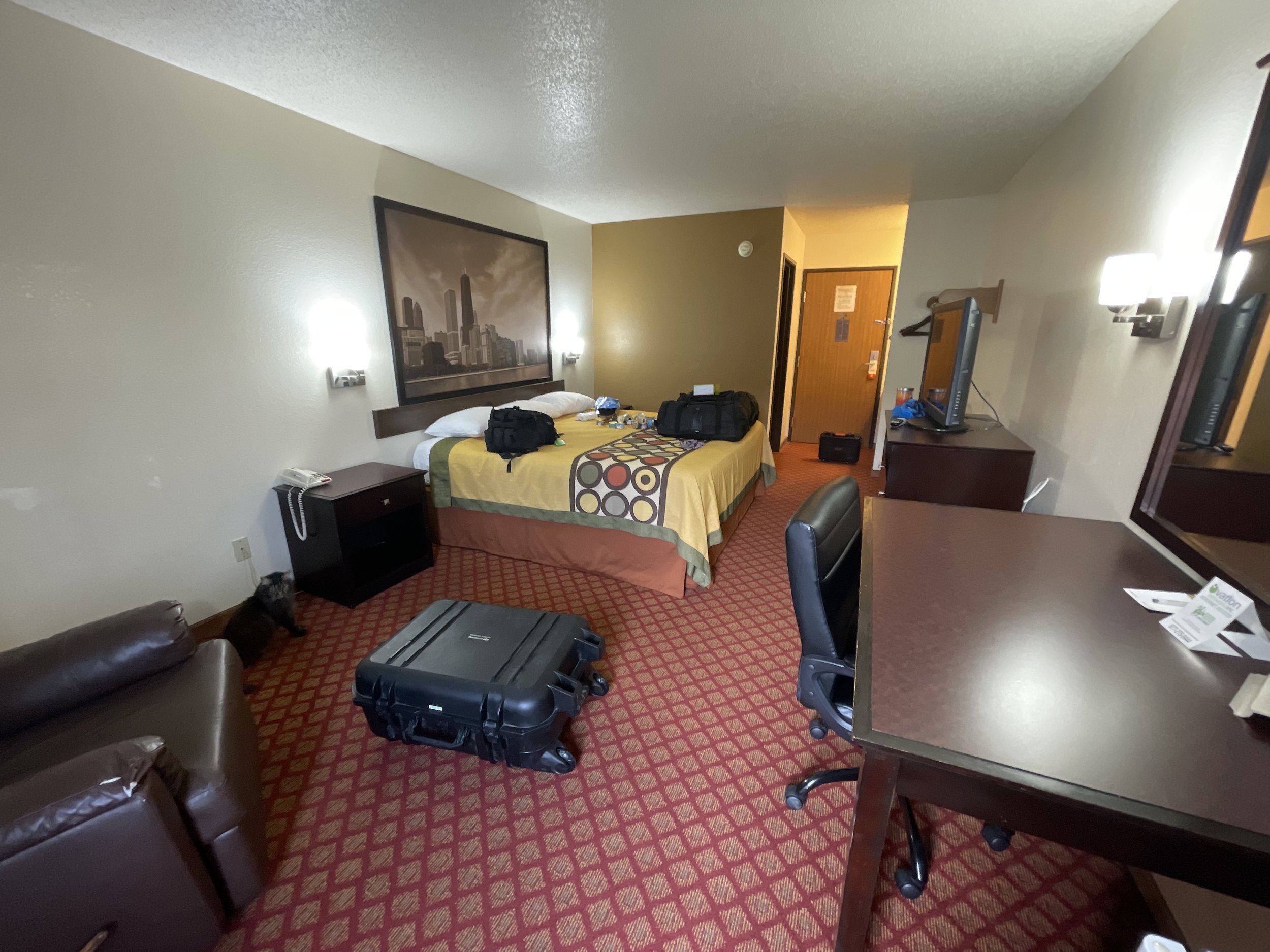
Surveying of “Big Ag” crops (50,000+ acres) flying M300’s from dawn to sunset across the State of Illinois.
-

Excellent daily planning -and- attention to real-world details are critical for success in “Big Ag”.
Long before the rooster crows at midnight 😉 hours of prep are required. Pilots must plan each flight ensuring drone is ready for potential issues. Elevation. Trees. Electric lines. Cell towers. Wind Turbines. Power. Parking. GPS. Line of sight, etc. You get the idea.
Ag Pilots get used to the routine, and that’s what often saved me in scary moments. Good planning. Having flown each flight in my head, considering what might go wrong and adjusting my plan(s) accordingly.
I define success as completing each day safely, according to plan, and hopefully the entire season without crashing or damage. Profit is also a consideration.
-

Sunrise to Sunset. The routine is the same every day. Wake up 5am. Clean up, load up, eat and head off @ 6am to first farm. Park and get drone setup, checked, and in the air mapping by 7am.
It took a while to earn my Pro Ag wings, but once you earn them it’s smooth sailing. You know you can handle nearly any situation.
Pilots sometimes get to determine which fields to fly when, which I found quite nice. That, and the fact almost everywhere we travel is quiet. Peaceful. Serene. Nothing but the birdsong and wind blowing across the crops.
On one flight, my drone returned without landing gear. One leg was missing. I couldn’t believe my eyes. Had to think fast, find way to save the very expensive drone… gently landing in grassy ditch without a scratch.
Shelter is not an option. One must be prepared to avoid or escape the summer storms. Some contained large hail. Thankfully, we did.
The most challenging aspect of flying all summer is the heat. Shade is hard to find in Illinois farmland, and it got brutal. Some days got above 100°F with humid air so thick it’s often difficult to breath. But the upsides rule, especially for pilots who love adventure. It’s like being paid to enjoy an endless summer.
-

Upon returning and eating dinner, Sabrina would promptly curl up and fall sleep. Meanwhile, I would begin the nightly rituals.
Unloading the car (no small task), setting up laptop, pulling data from drone/controller, validating the images for each field, screenshots for verification, and finally the uploading of data to the Taranis Cloud for Ag analysis.
Even after the upload starts, the Pilot can’t really sleep, they must plan for the next day, and also check upload progress often. Part of the deal.
I often set alarm for midnight, 1am, 2am etc. to ensure uploads finished.
Once completed and processed, the farmer has instant-access to incredibly accurate real-time reports and charts graphing his field(s) data, reporting the fields health, growth, weeds, diseases, pests, etc and variable-rate data (VRS) for fine-tuned spraying of crops.
Supported Crops
-
Tobacco
-

Corn
-

Soybean
-

Avacado
-

Banana
-

Sugar Cane
-

Hemp
-

Pine Tree
-

Palm Oil
-

Potato
-

Rapeseed
-

Sunflower
-

Tomato
-

Wheat
-

Barley


